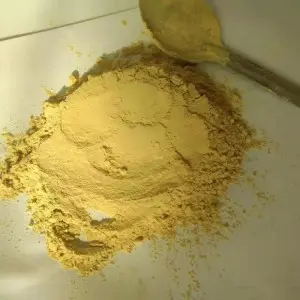dets. . 04, 2024 16:44 Back to list
Sweet Cherry Pollen Compatibility and Its Impact on Orchard Management Techniques
Exploring Sweet Cherry Pollen Compatibility A Guide for Growers and Producers
Sweet cherry trees (Prunus avium) are beloved for their delicious fruit and the beauty they bring to orchards. However, successful fruit production heavily relies on the compatibility of pollen between cherry tree varieties. Understanding pollen compatibility is essential for growers and can significantly affect yield and fruit quality. In this article, we will explore the importance of pollen compatibility in sweet cherries, the common strategies employed by companies in the industry, and tips for ensuring successful pollination in your orchard.
The Role of Pollen Compatibility
Pollen compatibility in sweet cherries is vital for fertilization and fruit set. Unlike some other fruit trees, cherry trees are primarily self-incompatible, which means that a single variety cannot fertilize its own flowers. As a result, growers must plant compatible varieties nearby to ensure successful cross-pollination. This compatibility is determined at a genetic level, and understanding these relationships can enhance fruit production and improve market outcomes.
Factors Influencing Pollen Compatibility
Several factors can influence pollen compatibility, including timing of bloom, pollinator activity, and environmental conditions. Different cherry varieties may bloom at various times, and this timing can significantly impact pollination success. For example, if a pollinator variety blossoms too early or too late in relation to the main crop, it may not successfully pollinate the flowers, resulting in poor fruit set. Growers must carefully select varieties that not only produce quality fruit but also bloom simultaneously.
Selecting Compatible Varieties
When planting sweet cherries, it is essential to choose varieties that are known for their compatibility. Many agricultural companies conduct extensive research to identify which sweet cherry varieties are excellent pollenizers for one another. For instance, 'Bing' cherries are well-known for their popularity, but they need companions like 'Lapins' or 'Stella' to enhance pollination. Fertilization often leads to a better production of high-quality fruits, and the right combinations can result in a more fruitful harvest.
Role of Companies in Pollen Compatibility Research
Several agricultural companies focus on sweet cherry production and actively engage in research to enhance pollen compatibility knowledge. Companies often provide detailed guides and compatibility charts to help fruit growers select the right combinations for their orchards. These resources can be invaluable in planning a cherry orchard, enabling growers to make informed decisions based on scientific insights.
sweet cherry pollen compatibility companies

In addition to compatibility, some companies invest in developing new cherry cultivars that are more resilient and compatible with existing varieties
. This continuous improvement ensures that growers have access to high-quality stock that can thrive in various climatic conditions while maintaining a robust pollen compatibility profile.Tips for Ensuring Successful Pollination
1. Diversity Plant multiple compatible varieties within close proximity. This diversity helps boost the chances of successful cross-pollination.
2. Bloom Timing Monitor the bloom times of the chosen varieties and ensure they overlap. This will maximize the pollination window.
3. Pollinator Health Encourage the presence of bees and other pollinators in the orchard, as their activity is crucial for effective pollination.
4. Resource Optimization Utilize resources and compatibility charts provided by agricultural companies to make informed decisions about variety selection.
5. Regular Monitoring Keep an eye on your trees during the flowering period; observing the success of pollination can help you make future plans.
Conclusion
Understanding sweet cherry pollen compatibility is key to successful cherry production. By selecting compatible varieties, monitoring bloom times, and embracing the resources offered by industry companies, growers can enhance their chances of a fruitful harvest. As the demand for high-quality sweet cherries continues to rise, knowledge of pollen compatibility will remain a cornerstone of successful cherry cultivation techniques. With careful planning and consideration, both seasoned and new growers alike can achieve bountiful trees laden with sweet, delectable cherries.
-
Pure Cherry Pollen for Optimal Crop Pollination
NewsAug.12,2025
-
Premium Cherry Pollen: Ideal for Pure & Effective Pollination
NewsAug.11,2025
-
Cherry Pollen: Pure & Potent for Natural Pollination
NewsAug.10,2025
-
High-Quality Peach Tree Pollen for Pure Pollination Success
NewsAug.09,2025
-
Fruit Paper Bags: Protect from Plant Pollen & Pests
NewsAug.08,2025
-
Plant Pollen Guide: Types, Uses & Artificial Pollination
NewsAug.07,2025